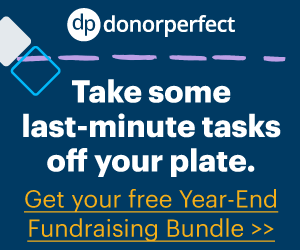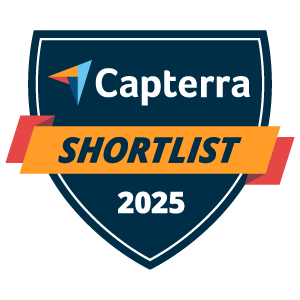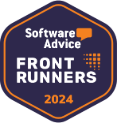20 MINS
Here’s The Thing To Know About Email: How to Connect with Readers Right from the Start
You know you’ve got a great cause people should be donating to and yet, your emails aren’t bringing in donations. What’s up with that? Chances are your emails just aren’t grabbing readers’ attention like they need to. In this session, fundraising copywriter Vanessa Chase Lockshin is going to give you a rundown on how to write an attention-grabbing first sentence that get readers engaged and donating.
Categories: DPCC, Expert Webcast
Here’s The Thing To Know About Email: How to Connect with Readers Right from the Start Transcript
Print TranscriptAnnouncer, as your organization grows, you’re probably ready to expand your fundraising efforts and become more efficient in your operations. To help you accomplish both goals, you’ll want a solution that integrates with your online donation forms, Read More
Announcer, as your organization grows, you’re probably ready to expand your fundraising efforts and become more efficient in your operations. To help you accomplish both goals, you’ll want a solution that integrates with your online donation forms, email and accounting solutions, donor, demographic, data and other top tier solutions. To make more time for your expansion efforts, you need to automate fundraising tasks, such as creating personalized thank you letters and receipts. To expand your fundraising, you need tools to help target the right donor with the right message, whether they’re major donors or monthly givers, from events to Moves Management, having a solution that can offer these capabilities means you can increase fundraising capacity without having to switch systems to make better decisions. You need a solution with the analysis tools and reporting your team needs to understand where you’re being successful, as well as areas for improvement in a time of frequent staff turnover, you’ll also want access to onboarding, training and support specialists whenever you need them, like members of your staff that will always be there to help you. DonorPerfect checks all of these boxes and perhaps others you didn’t know you needed get answers to your questions and learn more about how DonorPerfect can meet your unique needs by speaking with your account manager or attending a product demonstration webinar.
You when it comes to your fundraising journey, you don’t have to do it alone. At DonorPerfect, our team has stood by nonprofits as trusted partners for more than 40 years. We’re not just great software, we’re the team behind it. DonorPerfect offers personalized onboarding and ongoing support to ensure you get the most out of your system. We’re beside you every step of the way with DonorPerfect, our people make the difference in your success. Schedule a demo today you
as your organization grows, you’re probably ready to expand your fundraising efforts and become more efficient in your operations. To help you accomplish both goals, you’ll want a solution that integrates with your online donation forms, email and accounting solutions, donor, demographic, data and other top tier solutions. To make more time for your expansion efforts, you need to automate fundraising tasks, such as creating personalized thank you letters and receipts. To expand your fundraising, you need tools to help target the right donor with the right message, whether they’re major donors or monthly givers, from events to Moves Management having a solution that can offer these capabilities means you can increase fundraising capacity without having to switch systems to make better decisions. You need a solution with the analysis tools and reporting your team needs to understand where you’re being successful, as well as areas for improvement in a time of frequent staff turnover. You’ll also want access to onboarding, training and support specialists whenever you need them, like members of your staff that will always be there to help you. DonorPerfect checks all of these boxes and perhaps others you didn’t know you needed. Get answers to your questions and learn more about how DonorPerfect can meet your unique needs by speaking with Your Account Manager or attending a product demonstration webinar.
You all
right, well, good afternoon, everyone. My name. Is Amanda tadrinsky, and I’m a senior DonorPerfect Training Specialist, and I’m here to welcome you to Vanessa’s session. Here’s the thing to know about email, how to connect with readers right from the start. A little bit about Vanessa. Chase Lockshin, she’s a consultant specializing in email fundraising that tells engaging stories. She’s also the author of the storytelling nonprofit, A Practical Guide to telling stories that raise money and awareness. And since 2012 Vanessa has helped clients raise millions of dollars, including helping variety BC build its email program from the ground up, which went on the raise over 1 million in 15 months. Vanessa’s clients have included BC Women’s Health Foundation, win without war and Burnaby Hospital Foundation, a few housekeeping items. And I’m gonna guess by the laugh that I said that city name, wrong. No, you said it right. Actually, a few housekeeping items. You can download today’s presentation from the Detail section to the right of the presenter view. And all of our sessions are recorded and will be available on the DonorPerfect website after the conference. So Vanessa, I’m going to turn it over to you then,
all right. Well, good morning everyone. Thank you for joining me here today with this quick talk on writing and engaging emails. So I’m going to get right into it. One of the top things I tell my clients and students is that with email fundraising, we have to get to the point quickly. So often I see fundraising emails where the best, most compelling information is buried way down in the email. And I think that’s because a lot of times we think we need to work up to that really important, punchy, powerful point that we have to make. But the thing is, attention is a really important currency on email. We have to keep people’s attention from the top of that email, and so flipping things around and working with that information, that best information we have at the top is one of the best chances we have for keeping people’s attention. And I thought I’d just show you right here, a quick example of a small portion of an email that one of my clients sent a few years ago. The biggest, most important piece of information we could tell their audience was how the demand for their services had increased in a really unprecedented way. This was back in 2022 so the bold effect on the screen here that we really leaned into was two years ago, we were receiving 10 grant applications a day for funding a week, or 10 grant applications for funding a week from families across BC and today, we’re receiving 10 applications a day. That is a huge increase, and really speaks to a problem and a need that donors can solve, that we can then go on to tell them about in that email. So let’s talk about how you can do this in your own emails. So a couple things to say, attention, obviously, is everything. With digital fundraising, we have to use the first chances. We have to keep people’s attention right from the get go. And I would say, you know, aside from subject line, which is, of course, an important aspect of an email, the first sentences of your email are probably going to determine whether or not somebody is going to want to read. And while we want to be kind of attention grabbing in our copywriting, in that part of the email, we also want to avoid being disingenuous and spammy. There are lots of bad actors in the email space right now, and one of the best things we can do as email senders is work hard to be authentic, honest and transparent and reading efforts. And so that means, you know, not sending things that are really click baity or just categorically false, right? I always want to say that that goes without saying that. So it feels like important to note here. I often tell people the thing about email is that email writing is its own wonky genre of copywriting. You know, it’s different than writing a grant application. It’s different than a press release, it’s different than a direct mail letter. The conventions for what works and how to write a good email are different and pretty unique, but the good news is that you just need to learn the rules and understand kind of the framework for it, and then you can work within that to write much stronger emails. So that’s what we’re going to talk about here today. So what are the rules to getting attention in email? I often talk about kind of five pieces of this in when I when I train people on email, and so some of the things I talk about are the honest effect of copywriting. Mnar has a really succinct explanation of this that I’d like to point to. In my experience, really great copywriting weaves together all of these five pieces, it really flows beautifully. It builds into a really great ask that feels natural. And when I think about the really great fundraising emails that come into my inbox and catch my attention, and also emails like written that have performed really well these they all have these elements in kind of concert together. So what are these elements and how can we bring them into our emails? Number one, need, what? What is going on right now? Right? Like, who needs help? What needs to be changed, what problem needs to be solved? This is something that we can really think about right at the top of our email, because that need is the case for support. That is the thing that donors are responding to, and that ties into, right. How will the audience, how will our subscribers, our donors, positively affect the situation or contribute to change? If you think back to that email that I showed you just a few slides ago from variety DC that really pointed to this huge change in need, community needs, for support for kids, there was a really clear way there, right, like the donors can infer. And we went on to spell that out more clearly in the email about what they could do to positively impact the situation. Urgency, this is a big one in fundraising. I often think that urgency is kind of the backbone of really good fundraising, because without a sense of urgency, you know, people don’t have a reason to give today. And I always tell people like, urgency is the difference between somebody feeling like they can give today, make that gift a day, versus like, oh yeah, I can make that gift in a month from now, and it won’t matter. We want people to know that it matters and it makes a difference today. And so figuring out you know how to talk to people about why is today the right day to make a gift is important. Piece here, relevance, right? We always need to make sure people understand why is the thing we’re talking to them about relevant? Why should they care about it? And authenticity is a really important one. And, you know, as I said earlier, kind of like bad actors in the email space. You know, we want to have an authentic, true voice that people can connect with and care about hearing from. And one of the things that when I was thinking about examples of emails I’ve written in the last couple of years, one of the ones that I think really speaks to all of these pieces, and especially the authenticity piece, was an email I wrote for the YMCA greater Toronto. It was for a campaign for their housing program that supported unhoused youth, specifically from the two SL, GTP, QIA plus community. And the person who wrote the emails, the signatory was the director of the housing programs, but he was also a queer, unhoused youth experiencing homelessness in his teenage years. And so the opener of that email just read it to you real quick. Said, you know, Vanessa at 15, I was a queer youth experiencing homelessness in Toronto today, I’m the director of the YMCA straw house, helping two SL, GB, TQ, IA, plus youth transition from homelessness to independent living and stable housing. I mean, one, you probably want to know the story of how that happened, right? But also, it was such an incredible lived experience and a way for us to quickly connect with people and really create that sense of authenticity that somebody has lived experience, that they could speak to. So all of those elements are really valuable, and we want to bring them into each of the parts of a fundraising email. And so when I write fundraising emails, these are kind of the six pieces that I look at. One is the hook, and that’s what we’re going to talk about just a little bit more here. That’s that first opening sentence or two where we’re trying to hook people in and get them reading the explainer, which is kind of that next piece that kind of talks, I always tell people, it kind of like talks about, why is the problem a problem, and kind of builds that case or support going into the first ask. When I make an ask, and I would say those first three parts of the email are somewhere between 125 to 150 words, usually for me. And then we want to extrapolate on that a little bit more we want to, because I often tell people, convince the unconvinced, give them some more information. If they’re still reading, there’s a chance we can get them to make that gift on the second link or at the button at the bottom. And so what? What more information can we give them to convince them? What story can we tell that will help them feel compelled, and then making that second ask in the email is a really valuable thing that we can do. So let’s talk about the elements for great hook, and I can do this in your email. So the first sentence is where of your email is where you want to introduce the stakes in the problem to get people reading. As I said, this is where we want to bring in some best, most compelling information for people to read about, what the problem is about, what’s going on. I find this tends to emphasize some combination of need, relevance and urgency. Those are the elements of copy that I find work best, and it really puts the reader into the action quickly. You know whether this is like literal action, things that are happening, or kind of a more figurative action. You can decide that in your email, one of the ways that I check that when I am kind of editing and writing my own emails is to put the phrase, let me get straight to the point, right in front of the first sentence. And then see, do I get straight to the point right after there, if I have fantastic, if I have not, if I have, like, meandered my way to a point, you know, the next paragraph down, I probably have some editing work to do. So it’s a way that you can kind of try to figure out if you’ve done if you’ve done that. So
what am I saying? Some shortcuts for writing. Go to books. So there’s a few things that you can do to kind of help yourself get into this information quickly and kind of set up a really strong start to your email. So I always tell people they’re shortcuts question, though. I think there are some shortcuts in their own ways. So the things that I often do in my emails, these are four pieces. Number one, we could start with here and. Place. So I live in Victoria. BC, I could say, you know, here in Victoria, you know, the hospitals are currently really crowded, and patients are experiencing long wait times in ers, if I was writing a Hospital Foundation appeal, you can probably think about some context in your own community, your region, your state, whatever kind of context you’re working in, by giving people that kind of sense of the media and see of like here, right, like in this place and in a place, we’re really grounding what we have to say in a specific moment in time. And that can be really powerful for people. It really brings them into the set, the setting and what’s happening. You would even think about, you know, more locally, like on the street, like you work on a busy street, and your work is kind of out in the community. You know, being able to speak to that is also another way to kind of create that setting for people. Statement of principle, I think this is a really powerful one. Principles and values are often at the heart of fundraising, right? That is philanthropy and action. People deciding to give a gift because value that they have because of something they believe in. And so sometimes, if we can start an email with a fundamental value that offers our readers a chance to agree with us, or say, like, yeah, like, that thing’s wrong, or actually that like that shouldn’t be the case, or we should be able to change that, we can get buy in from people really quickly in an email. One of the best examples I have of that was an email that I wrote for a sexual assault Support Center, probably over a decade ago now, but at the time, they had a six month wait list for their free counseling support program in their center. And so the first sentence in the email that we started with was, no sexual assault survivor should have to wait six months for counseling support. That was kind of a really good thing, where people could say, yeah, like, of course they shouldn’t have to wait that long. And then wanting to read more about well, why is there a long wait? And what can I help do about that? One word summaries are also a really kind of fun and interesting way to start an email. This could be your one word reaction to or description of something that’s happening. You know, it can be a positive reaction, or it can be a negative one. You can kind of think about that, and then it tees up for you to say. Why? Why this word? What’s going on? Why do we have this reaction? And lastly, the one that I probably use the most often, most often, but I really like the phrase right now. It is the simplest way to establish timeliness, literally, the words right now and then explain to the reader what is happening in this particular moment. Will get you into your email really, really quickly. So I thought I would just talk here briefly in the last couple minutes about the editing evolution of one of my emails, just to show you how I think about this editing process and also write a really strong book, it is by far the place where I spend the most time editing in an email, because it is such an important piece of copy. So when I was working with the YMCA of Greater Toronto, during their year end campaign, they were raising money for their youth homeless shelter. And, you know, obviously it’s the dead of winter in Toronto, very cold, very snowy, all the things. And so one of the things we wanted to think about was like, how do we kind of create some context around obviously, there’s, like, the piece of like, lots of youth are housed in Toronto, 3000 at the time. Also, it’s winter time, so it’s cold. There’s dangers of frostbite, things like that. And so when I initially was kind of playing around with this, these were kind of three versions that I thought about doing for this email. And, you know, I liked the idea of, you know, highlighting the volume of youth that were unhoused, and also trying to think about like, how do we kind of create the sense of urgency there’s a great need in the community for this service and for youth to have a place, a warm, safe place to sleep at night. So these are some initial thoughts that I had where I landed. Was the second bullet point here tonight, 3000 young people in Toronto won’t have anywhere to sleep as the temperatures continue to drop their risk for frostbite and hypothermia, not to mention the violence, exploitation and abuse they don’t face on the street year round. And so again, this kind of combined, or sort of married, a couple of really important things, one kind of the immediacy, the timeliness piece of tonight. So people could be like, Oh, look like, I’m, you know, it’s the morning I’m at work or the afternoon tonight, though, there’s like 3000 young people who don’t have a place to sleep in Toronto. Um, that’s, that’s a good fact for people to just connect with, but then also kind of rationing up the stakes of that, of like, you know, they’re sleeping outside in these really terrible, trying conditions. And maybe there’s something that we can do about that. What could we do about this? So it kind of creates that curiosity and that dialog that we can continue to write about in our emails, right? Well, that’s what I got for you here today in my short 15 minutes talking about how to write emails. It’s sort of emails that connect with people, but I want to say, if you want some more information about writing emails and managing your email programs, a great toolkit over on my website, at storytelling nonprofit, forward, slash, all
right. Well, if Well, thank you for attending Vanessa session. Next up on stage one is going to be Robbie Healy, stay the course individual giving tactics for changing times. And on stage two, Matthew Montoya, from constant contact with from story to support how marketing powers nonprofit growth. And no matter what session you choose, you will not miss any content, since all of our sessions are recorded and will be found on our DonorPerfect website after the conference. So we’ll see you guys in a few you.
Read LessRelated resources
Constituents Page
Nonprofit Expert Episode 39 – Click, Connect, Give: Turning Digital Touchpoints into Donor Relationships
Donor Connection Guide: Why Engagement Isn’t Enough
Get a demo





